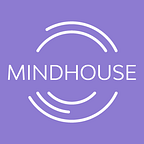Learnings from my journey so far at the early-stage mental wellness startup.
In a few days, I will complete 9 months of working full time at Mindhouse. It feels like a lot longer than that, primarily because of how far we’ve come as a team in this short duration of time. From an offline meditation company, to dealing with the pandemic, and finally emerging stronger than before with a pivoted digital-first product — the journey has been spectacular and full of learnings.
Having spent the first 7 years of my career in large and established organisations, taking up the brand & communications mantle for an early-stage startup obviously came with a steep learning curve. Today, I take the rare opportunity to reminisce about this short, yet eventful journey, and share some of my key takeaways.
Execution > Strategy
“Less talking and more doing” is the simple trick to getting more done. What starts out as a strategic thinking exercise, often translates into procrastination, and eventually leads to some ideas never seeing the light of day. And therefore, execution will always trump strategy — average ideas with great execution tend to perform better than great ideas with average execution. At Mindhouse, we take out time once a week to discuss our ideas & goals — and the rest of the week we pursue and execute those ideas relentlessly. Some work and some don’t, but at the end of the week, we’ve gotten something done, instead of sitting on a compilation of ideas.
Build adaptability into your Brand
Startups are exciting — business priorities and directions can change periodically. It’s important to understand that the brand must evolve with the business. Having worked on the brand side for large organizations, I’d been conditioned to function as a policeman to protect a rigid brand definition — usually outlined in a multi-pager brand manual. However, as we embark on this journey towards creating a category & brand from scratch in the mental wellness space, every day comes with its learnings on what works and what doesn’t. These learnings are pointless if we don’t incorporate them into how we communicate — our messaging, creatives and brand. As we learn new things about our users everyday, the brand must adapt; thereby shifting my priority from ‘gate-keeping’ for the brand to ‘creating & adapting’ it.
Make ‘haste’ while the sun shines!
During my advertising days, for a mid-size brand campaign, we’d generally spend a month or two on consumer research, another month on planning, a month for execution and approvals and then launch — the average cycle being 3–6 months long. Some brands took even more time. For example, for a global home furnishing brand entering the Indian market, we spent over 18 months from the day we pitched for the account, until the day the first communications were rolled out. The ads, of course, were stellar :)
In contrast, we conceptualized and wrote our first brand film for Mindhouse (Winner’s Mindset) in 3–4 days, and completed production and editing in 1 week. I believe we did a pretty good job of it too! Not every campaign needs to be created in 2 weeks, but at a startup, a good campaign today is far more valuable than a Cannes winner next year — horses for courses, you see.
Organic marketing trumps paid media (at least initially)
Post the COVID-induced lockdown, our operations & content teams were quick to pivot all our studio classes to our app in just 1 week, and we needed to figure out how to start getting users onto the platform. As a new brand selectively known only in Gurugram, we had to become accessible and known nationwide overnight.
Instead of initiating a media blitzkrieg and spending heavily on advertising, we decided to undertake multiple organic partnerships to help get the word out. On the B2C side, we identified relevant brands with highly engaged following, and partnered with them to further the mental wellness cause and introduce Mindhouse to their customer base. Not only did this help us build awareness, but it also allowed us to acquire a very relevant and targeted user base. On the B2B front, we reached out to HR representatives at organizations, and rolled out access to our app for their employees, to help them through the difficult times. Over the last 6 months, we’ve partnered with 200+ consumer brands, and currently work with 600+ organizations to offer our services. Essentially, we acquired our first 50,000 users without spending a dime on advertising.
Passion fuels persistence
As cliche as it sounds, your heart’s got to be in it, to be successful at a startup. While each person may have their own motivators, you have to feel invested in the cause or the vision to be able to go the extra mile when it’s crunch time. Personally, I’m passionate about making mental health solutions more accessible for everyone, and I consider it a great privilege to be able to contribute towards that cause every single day at work — it’s what keeps me going.
Authored by: Dhruv Prakash — Lead, Brand & Communications, Mindhouse
